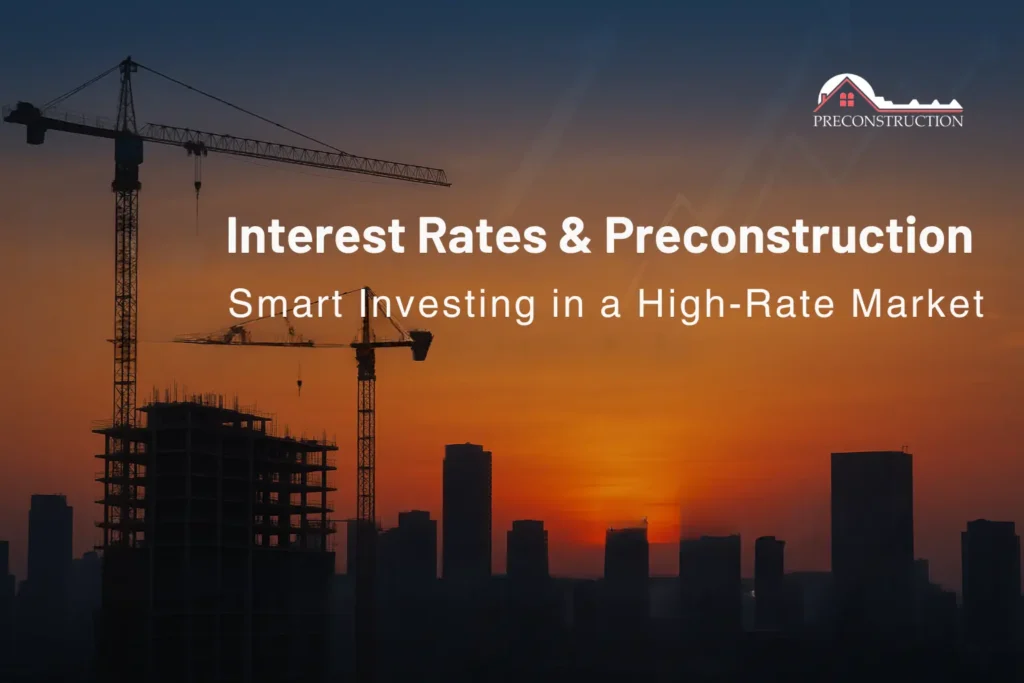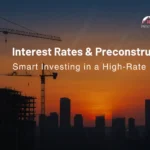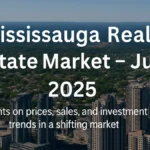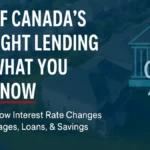Introduction: The New Era of Higher Rates
For more than a decade, real estate investors, developers, and homebuyers have benefited from historically low interest rates. Borrowing was cheap, mortgage payments were manageable, and preconstruction projects flourished. However, the post-pandemic landscape has shifted dramatically. With inflationary pressures, central banks like the Bank of Canada and the U.S. Federal Reserve have raised their benchmark rates multiple times.
Add value and flexibility to your property with one of our approved custom garden suites in Toronto.
This new higher-rate environment has created challenges—and opportunities—for the preconstruction real estate market. While borrowing costs are higher, savvy investors who understand how to navigate interest rate dynamics can still build strong portfolios, secure capital appreciation, and maximize returns.
This blog dives deep into:
How interest rates affect preconstruction projects
The psychology of buyers and developers in a high-rate environment
Strategies to mitigate risks and seize opportunities
Real-world case studies and insights for investors
Long-term outlook for rates and what it means for preconstruction
By the end, you’ll be equipped with actionable knowledge to make smart, resilient investments—even when rates are climbing.
Discover urban living and suburban comfort in these curated Mississauga real estate listings.
Understanding Interest Rates and Preconstruction Investments
What Are Interest Rates?
Interest rates are essentially the cost of borrowing money. Central banks, such as the Bank of Canada and the U.S. Federal Reserve, adjust rates to control inflation, stimulate or cool the economy, and maintain financial stability.
Find family-friendly neighbourhoods with modern builds in our Markham real estate listings.
Low rates encourage borrowing and spending.
High rates slow borrowing and cool demand.
Why Preconstruction Is Sensitive to Rates
Preconstruction real estate, unlike resale properties, involves long timelines—typically 3 to 7 years from purchase to completion. This means investors are committing capital today while speculating on future value. Interest rate shifts over that period can drastically affect:
Financing costs – mortgage qualification and monthly payments.
Investor demand – appetite for speculative purchases.
Developer financing – construction loans and project approvals.
Market absorption – how quickly units sell in preconstruction projects.
Explore exciting new communities through the latest Vaughan real estate listings and project launches.
The Impact of Rising Interest Rates on Preconstruction
1. Higher Borrowing Costs
When rates climb, buyers face stricter mortgage qualification rules and higher monthly carrying costs. For example:
A $700,000 condo purchase at 2% interest = ~$2,600/month.
The same condo at 6% interest = ~$4,500/month.
This affordability gap can reduce demand for preconstruction properties.
Browse top-rated Hamilton real estate listings with both resale and pre-construction options.
2. Price Adjustments & Slower Absorption
Developers may face slower unit sales as fewer investors qualify. Some developers offer incentives (e.g., capped closing costs, extended deposits, or free upgrades) to attract buyers.
Read expert takes and investment strategies on the Wedu real estate blog updated regularly with GTA trends.
3. Investor Psychology
Rising rates often trigger uncertainty. Some investors delay purchases, waiting for potential price drops. Others see opportunity, buying during slowdowns when competition is lower.
Access comprehensive Toronto MLS and real estate listings including condos, townhomes, and new builds.
4. Developer Financing Challenges
Developers rely on construction loans, which are also subject to rate hikes. Higher costs may delay or cancel projects, reducing future supply. Ironically, this limited supply can create price resilience in the medium to long term.
Explore or compare MLS® listings in Greater Toronto Area for sale and rent on one of the most trusted platforms in Ontario.
5. Rental Market Strengthening
As mortgages become harder to qualify for, more people rent instead of buying. This drives rental demand—a positive factor for investors looking at preconstruction units as future income properties.
Stay informed on Canada’s real estate market through the latest updates on our Preconstruction Blog.
Opportunities in a High-Rate Environment
While rising rates create headwinds, there are unique advantages for smart investors:
Less Competition – Fewer buyers mean more negotiation power.
Developer Incentives – Discounts, extended deposit structures, and upgrades are more common in high-rate markets.
Future Equity Growth – Buying during a slowdown often yields outsized returns when rates normalize.
Rental Yield Strength – Rising rents can help offset higher financing costs.
Supply Constriction – Cancelled projects today mean tighter supply tomorrow, supporting price growth.
Secure a property in one of the most promising suburbs with our Richmond Hill pre-construction developments.
Strategies for Smart Preconstruction Investing
1. Focus on Location Resilience
Not all markets are equally impacted by rising rates. Properties near:
Major transit hubs
Universities
Employment zones
Lifestyle amenities
…retain demand even in higher-rate environments.
Invest in high-demand Mississauga pre-construction condos with excellent transit and amenities.
2. Leverage Flexible Deposit Structures
Seek projects that allow staggered deposits (e.g., 5% every 6 months) instead of large upfront payments. This improves cash flow while waiting for project completion.
Discover elegant Markham pre-construction homes in a vibrant and diverse community.
3. Negotiate with Developers
In a high-rate climate, developers want sales to move. Don’t hesitate to negotiate:
Lower assignment fees
Capped development charges
Free storage or parking
Extended closing timelines
Check out the latest pre-construction homes in Hamilton with strong growth and rental potential.
4. Prepare for Mortgage Qualification Early
Work with mortgage brokers to:
Lock in pre-approvals
Explore extended rate holds
Consider alternative lenders
5. Analyze Rental Projections
Ensure projected rents align with expected mortgage payments. In hot rental markets, rising rents may cover much of the financing gap.
Discover top Toronto pre-construction condos for investment and end-user opportunities across the GTA.
6. Diversify Across Markets
Don’t concentrate in one city or product type. Diversify across condos, townhomes, and different geographies to spread risk.
Case Studies in High-Rate Preconstruction Investing
Case Study 1: Toronto Condo Market (2022–2025)
In 2022, when interest rates began climbing, condo sales slowed sharply.
Developers offered incentives like 0% assignment fees and capped closing costs.
Investors who bought during 2023 slowdowns saw 12–15% appreciation by mid-2025 as demand rebounded.
Browse exclusive listings of pre-construction condos in Toronto and get early access to major developments.
Case Study 2: Vancouver Preconstruction Townhomes
Higher rates discouraged first-time buyers in 2023–2024.
Rental demand surged, making preconstruction townhomes attractive income properties.
Investors leveraged rising rents to offset higher carrying costs, achieving strong yields.
Case Study 3: Miami Luxury Condos
Rising U.S. rates slowed speculative foreign buying.
However, developers repositioned projects with luxury amenities and branded residences to attract resilient demand.
Early investors benefited from exclusive incentives and strong resale interest once projects neared completion.
Expert Insights & Investor Psychology
Experts emphasize:
Buy during uncertainty, sell during optimism. High-rate environments often create windows of opportunity that reward long-term thinking.
Preconstruction is a hedge. Since closing is years away, today’s high rates may not apply when the mortgage begins. If rates fall in 3–5 years, today’s buyers win.
Cash flow and holding power matter. Investors with solid cash reserves are best positioned to ride out market volatility.
Long-Term Outlook on Rates and Preconstruction
While no one can predict rates with certainty, most analysts believe:
Rates will eventually stabilize once inflation is under control.
Long-term averages suggest rates may settle lower than today’s peaks but higher than the ultra-low pandemic era.
Preconstruction buyers today are essentially “buying low” in terms of market competition—setting up for strong gains when borrowing conditions ease.
Conclusion: Turning Higher Rates into Strategic Advantages
High interest rates can feel intimidating, especially for investors considering preconstruction real estate. But history shows that those who buy strategically during uncertain times often achieve the greatest returns.
By understanding the impact of rates, leveraging developer incentives, focusing on resilient locations, and preparing for future financing, investors can not only weather the storm but thrive in it.
Key Takeaways:
Rising rates reduce affordability—but also competition.
Developers are offering significant incentives in today’s market.
Rental demand is strengthening as fewer buyers qualify for mortgages.
Long-term supply shortages will support price growth once rates stabilize.
Smart, prepared investors can seize opportunities now for future gains.






